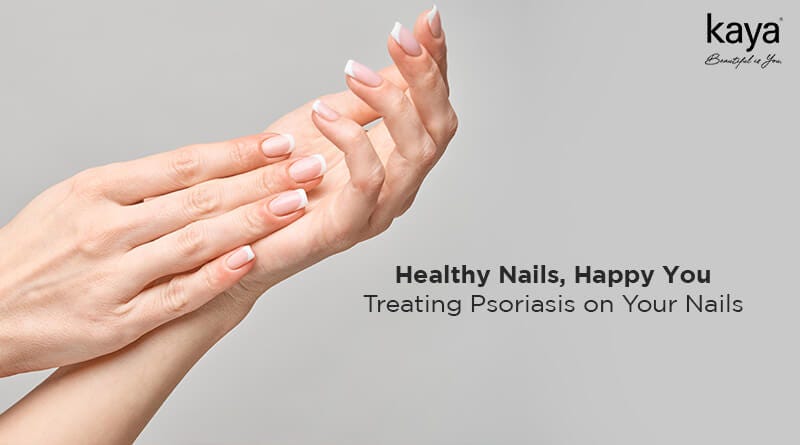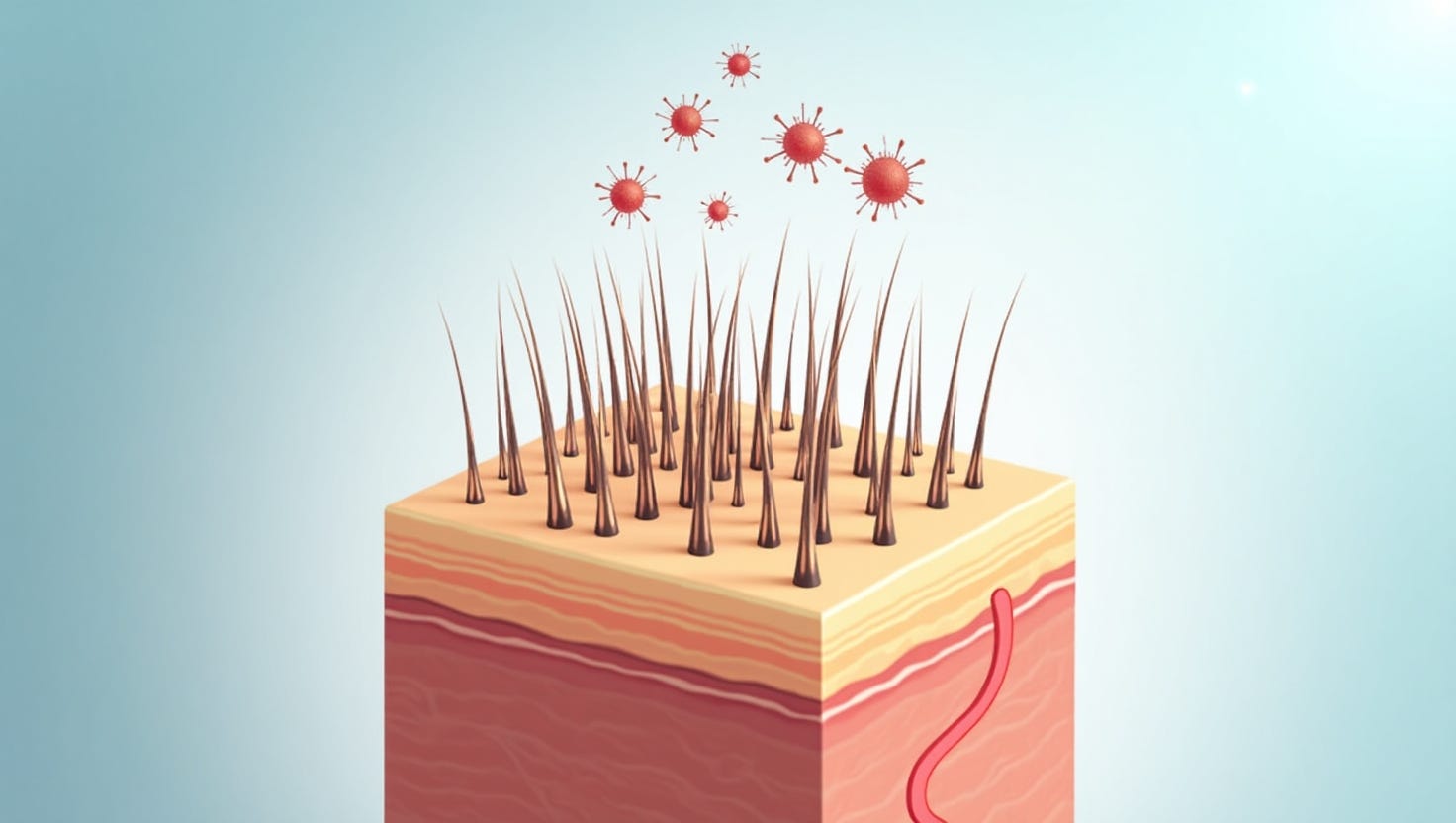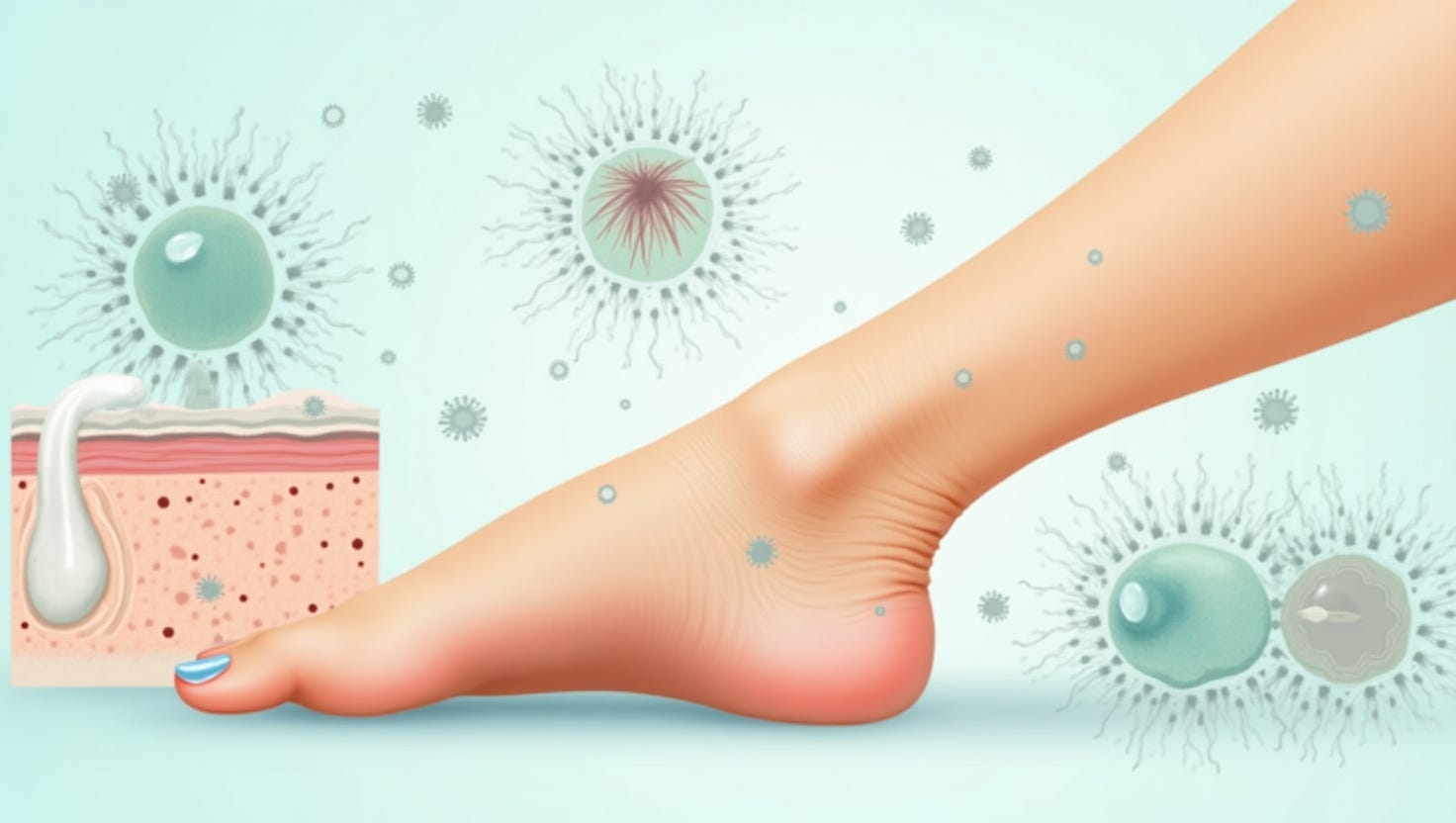Nail Psoriasis: Causes, Symptoms, and Treatment

Table of Contents
- Understanding Nail Psoriasis
- Causes of Nail Psoriasis
- Symptoms of Nail Psoriasis
- Impact on Quality of Life
- Managing and Treating Nail Psoriasis
- When To Seek Medical Attention
Understanding Nail Psoriasis
Nail psoriasis is a chronic autoimmune condition psoriasis, affecting the fingernails and toenails. It's characterised by a range of symptoms, including discolouration (often yellow-red), pitting (small or depressions on the nail surface), thickening of the nails, and separation of the nail from the nail bed, known as onycholysis. In some cases, the skin under the nail may become thickened, causing a buildup called subungual hyperkeratosis.
Causes Of Nail Psoriasis
The exact cause of psoriasis, including nail psoriasis, is not fully understood. Still, it is believed to involve a combination of genetic, immunological, and environmental factors:
- Genetic Factors: There's a vital genetic component to psoriasis. If one or both parents have psoriasis, the risk of the child developing it is increased.
- Immune System Dysregulation: Psoriasis is considered an autoimmune disease. In individuals with psoriasis, specific immune cells mistakenly target healthy skin cells. This causes an overproduction of new skin cells, leading to the characteristic plaques seen in plaque psoriasis and nail changes in nail psoriasis.
- Other Factors: Patients with certain conditions, such as HIV, are more susceptible to psoriasis. Additionally, hormonal changes, especially pregnancy-related, can influence psoriasis activity.
Symptoms Of Nail Psoriasis
Symptoms can range from mild to severe and may include:
- Pitting: small dents or pits on the nail surface.
- Discolouration: Nails might turn yellowish or show signs of abnormal colour patches.
- Onycholysis: separation of the nail from the nail bed, often starting at the tip and continuing towards the cuticle.
- Thickening: Nails may become thick and difficult to trim.
- Fungal Infections: Those with nail psoriasis are more susceptible to fungal infections in their nails.
If you or someone you know suspects they have nail psoriasis, it's important to see a dermatologist for proper diagnosis and management.
Impact On Quality of Life
Nail psoriasis is a condition that affects a person's life, affecting their physical, emotional, and social well-being.
- Pain and Discomfort: Nail psoriasis can cause significant pain and discomfort. The condition often leads to the thickening and crumbling of nails, making simple tasks like gripping objects, typing, or even walking uncomfortable. In severe cases, the nails may become detached from the nail bed, causing acute pain.
- Cosmetic Concerns and Societal Perceptions: The visible nature of nail psoriasis can substantially impact a person's self-esteem and body image. Affected individuals may feel self-conscious about the appearance of their nails, which can lead to social withdrawal and avoidance of activities that may draw attention to their condition.
- Daily Tasks and Challenges: Nail psoriasis can pose significant challenges in performing routine tasks. Something as basic as grooming, including cutting and cleaning nails, can become painful and time-consuming. Additionally, individuals may face difficulties in applying cosmetics to conceal nail changes, which can be emotionally distressing for many.
Managing And Treating Nail Psoriasis
Achieving and maintaining healthy nails in the presence of nail psoriasis necessitates a combination of medical and home-based interventions:
- Topical Treatments: Corticosteroid ointments or creams can be applied to the affected nails. These treatments aim to reduce inflammation and slow the rapid growth of skin cells.
- Steroid Injections: In some cases, corticosteroids can be injected directly into the nail bed or matrix to treat nail psoriasis. This is usually done if the nail is lifting from the nail bed.
- Antifungal Medications: Given the higher susceptibility to fungal infections, antifungal treatments, either topical or oral, might be prescribed.
- Phototherapy: A controlled amount of ultraviolet light is directed to the affected nails. This can be beneficial, especially when combined with other treatments.
- Oral Medications: For more severe cases or when psoriasis affects other parts of the body, oral medications, such as methotrexate, cyclosporine, or biologics, might be prescribed.
When To Seek Medical Attention
If you notice signs of nail psoriasis or worsening existing symptoms, seek medical attention. Essential indicators include initial nail changes, joint pain, signs of infection like redness or pus, adverse treatment side effects, or a lack of improvement with treatment. Emotional distress related to nail psoriasis also warrants a visit to a healthcare professional. Early diagnosis and intervention are crucial for optimal management.
In conclusion, nail psoriasis adds a unique dimension to the challenges posed by this skin condition. Those small pits and nail bed separations can be both discomforting and disheartening.
Consulting a dermatologist is the key to identifying the root causes of psoriasis affecting your nails and finding the right treatments. They possess the knowledge and experience to pinpoint the issue accurately.
But wait, there's more! Kaya, with its profound expertise in skincare, can be your steadfast companion on the path to achieving nail health par excellence. With our guidance and specialised care, you're in good hands.











